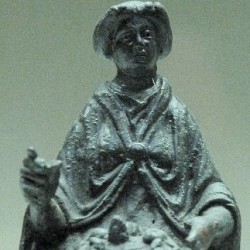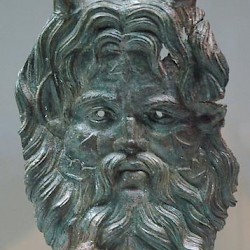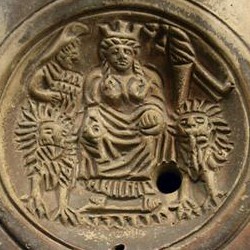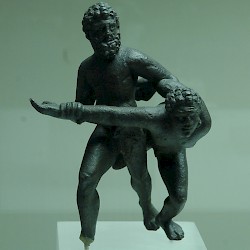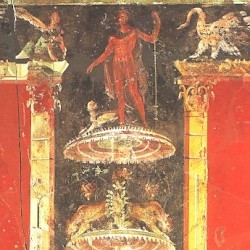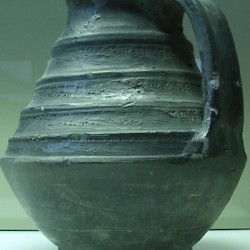Colonia Claudia Ara Agrippinensium (Köln)
Q23048Cologne: capital of the ancient Roman province Germania Inferior, on of the largest ancient cities north of the Alps. Modern Köln.
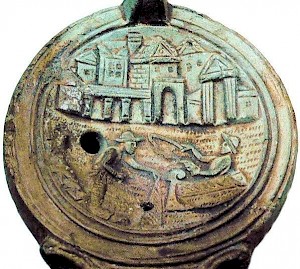
Cologne was founded in 37 or 19 BCE, when the Romans transferred the Ubians from the east bank of the Rhine to the west bank, which was almost empty since the wars of Julius Caesar, who had exterminated the Eburones. The new town was called Ara Ubiorum, "altar of the Ubians", which indicates that there was a shrine for the emperor cult. The Roman author Suetonius reports that among the objects kept in this temple was Caesar's sword.note
Initially, there were two legions stationed on this site (the Nineteenth was one of them). After the battle in the Teutoburg Forest in September 9 CE, I Germanica and XX Valeria Victrix are known to have stayed at Ara Ubiorum, but after 28, the town was no longer in use as a military settlement, although there was an important naval base to the south, now known as Köln-Alteburg.

Ara Ubiorum became the capital of Germania Inferior and in 50, it was promoted to the rank of colonia, known as Colonia Claudia Ara Agrippinensium, which means "Claudius' Colony near the Altar of the Agrippinians" - the latter being the new name of the Ubians, who wanted to honor Agrippina Minor, the wife of of the emperor Claudius. She was born in Cologne in 15 or 16. The long name was soon abbreviated to CCAA. Colonies were considered to be little copies of Rome, which implied that Cologne had to have a Capitol of its own, a temple dedicated to the Capitoline Triad. Today, the church of St Maria im Kapital still stands on the artificial hill on which the Roman sanctuary was built.
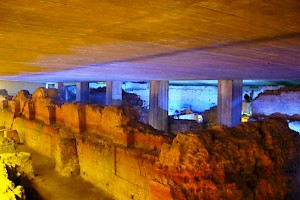
At about the same time, the praetorium was built, the headquarter of the army of the Lower Rhine. The building became the palace of the governor when the military zone became a province in the normal sense of the word (in 83 or 84). The praetorium occupied a surface area of about 3½ hectares and must have been one of the largest buildings in Germania Inferior. Its eastern wall was close to the Rhine and must have been very impressive, showing the Germanic tribes on the opposite bank the power of Rome. Beautiful mosaics decorated the floors, and we know that this was the place where the governor received important visitors. In these rooms, which are currently accessible, Vitellius was recognized as emperor.
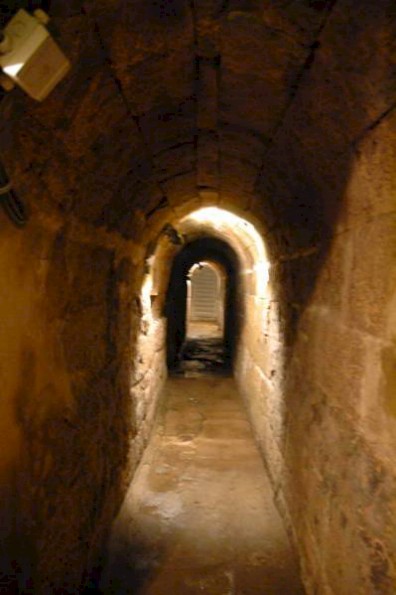
Although the history of the city is not without calamities (e.g., a fire in 58 and a military attack during the Batavian revolt in 70), the city continued to grow and prosper. The town also boasted of shrines dedicated to Mars, the god of fertility and war, and to the oriental light god Mithras. Near the river port must have been a sanctuary of the river god Rhenus (Rhine) and Portunus, the god of river trade and ports. As capital of a province, Cologne also had a temple dedicated to the emperor, which has already been mentioned.
We know of the existence of a playhouse in Cologne, but it has not been discovered yet. To the best of our current knowledge, this was the only real theater in Germania Inferior. In other towns, actors had to use amphitheaters.
The city was not only an entertainment center, but also an important port of transshipment. The legionary soldiers in the large frontier fortresses and the auxiliaries in the small forts needed great quantities of food, especially corn, which was produced on the fertile loess of Belgica. The main road from Bavay and Tongeren to the trade center Cologne (sometimes called Via Belgica) was therefore of vital importance for the survival of the enormous army of the Lower Rhine. Cologne was also an important production center. Many little phials, which must once have contained perfume, attest that the city already produced eau de Cologne.
The town wall of Cologne, which was built in the first decade of the first century, was 2½ meters wide and eight meters high, and had nine gates and twenty-one towers. Its total length was no less than 3,900 meters and it surrounded a city with a surface of almost a square kilometer (96.8 hectares to be precise). This was a big city. The bridge across the Rhine was, on the opposite bank of the river, defended by a small fort, Divitia. Even in peace time, these fortifications must have impressed any visitor.
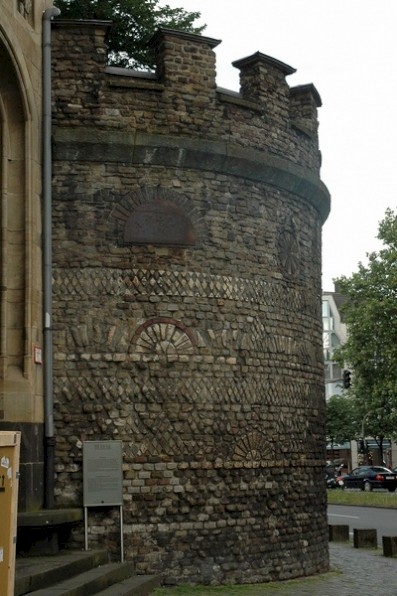
Safe as it was, Cologne was, in the third century, the only town in Germania Inferior that continued to grow. The incursions of the Franks had caused the depopulation of the countryside, which meant that other towns declined. Cologne continued to prosper and could boast of some 25,000 inhabitants within the walls and about the same number of people in its immediate vicinity.
In 257, a mint was founded in the city, and between 260 and 274, it was one of the residences of the emperors of the independent Gallic Empire. After this had been reintegrated into the official empire, two officers, Bonosus and Proculus, tried to create a new independent empire, based on Cologne (280-281). Their revolt was quickly suppressed by the emperor Probus.
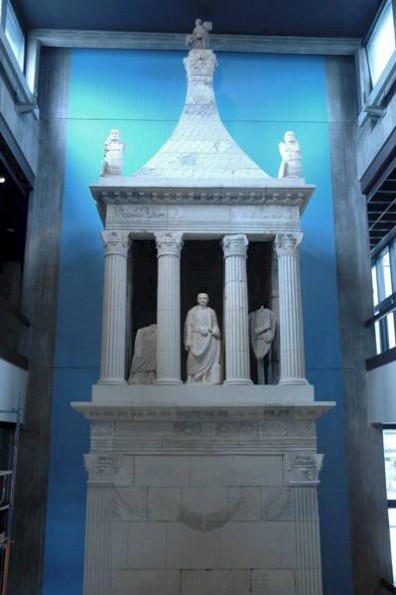
That it was a truly cosmopolitan town can be deduced from the presence of many foreign cults, like Mithras, Dolichenus, Isis and Serapis. There was a substantial Jewish minority, which is mentioned in a decree by the emperor Constantine I the Great (306-337) and is also attested by archaeologists. Christianity must have arrived in the late third or early fourth century. The first bishop was a man named Maternus of Trier.
Germanic warriors occupied and looted Cologne in 355/356. The city did not really recover, although it remained an important center of Late Roman civilization. Even after the collapse of Roman power in the Rhineland in the early fifth century, Roman commanders considered the city as theirs, and it was only in 456 that general Aegidius was forced to admit that the city had become Frankish.
Cologne always remained an important city and was the seat of an archbishop. This was to be the base for the city's later fortunes: in the Middle Ages, the archbishop of Cologne was a very important man and had the rank of "elector", i.e., one of the seven princes that had the right to elect a new German king.
Today, Cologne has an excellent museum on the Roman presence in Germania Inferior.
Literature
- Carl Dietmar, Marcus Trier, Mit der U-Bahn in die Römerzeit. Ein Handbuch zu den archäologischen Ausgrabungstätten rund um den Bau der Nord-Süd Stadtbahn (2006)
